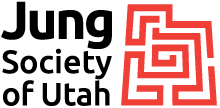Goddess Blog V, Hecate: Goddess of the Crossroads & Witchcraft
It’s been some time since the Jung Society of Utah had an installment of the Goddess blogs. This series was designed to honor the feminine principle as it exists in our collective psychic experience, across cultures and eras of time. Behind the impulse to continue unfolding facets of feminine archetypal power, was a desire to highlight the many shapes, forms, and expressions of feminine experience available as inspiration for unfoldment, both collectively and personally, in contrast to the flattened images and stereotypes that modernity promotes. Previous blogs explored the archetypal influences of the Goddesses Oya (Nigerian), The Spider Woman (Diné), Kali (Hindu), and Artemis (Greek). This week we return to spinning the wheels of Goddess inquiry by courting the Greek Goddess Hecate (sometimes spelled Hekate). Hecate felt an appropriate choice as a Goddess who can act as psychopomp, moving between heaven and Hades, and who is now strongly associated with the archetype of the Witch, working with medicinal plants, and engaging in magic.
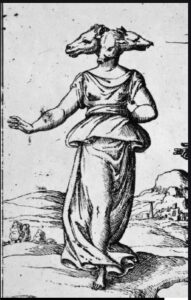
Hecate is a long loved Goddess. In her earliest appearances, she is often represented as a triple Goddess, representing youth, maturity, and wisdom. Because she was initially associated with great power over three realms, earth, sea, and heaven, [1] representations of her facing the three directions can be found across a variety of time periods. However, these representations are also symbolic of her role as guardian of directions, and torchbearer at the crossroads between realms of light and shadow. She is said to bestow great gifts of prosperity to those who honor her as fisherman, merchants, and farmers. Hecate is known to give favor in times of war, while also possessing the skills of midwifery and protection of the young. Though in modern interpretation she is often considered a dark counterpart to Artemis, she is rarely depicted as guarding the lives of wild creatures, and frequently described as being involved in the daily survival oriented activities of people. Therefore she was often worshiped as an influencer of nature in the lives of common folk. Symbols associated with her dynamic, wild wisdom include the torch, keys of knowledge, Hecate’s wheel, wild dogs, the sickle moon, the serpent, and offering bowls.
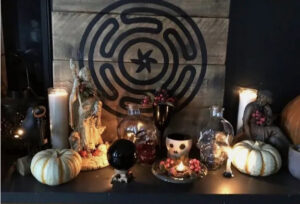
Perhaps because of Hecate’s use of nature to assist in human affairs, combined with her ability to move between the heavens and Hades, her more modern associations are with darkness, magic, and the archetype of the Witch. While some will argue that this development is a result of patriarchal vilification of her profound influence, it may also be that she is more useful to women now as a priestess who reaches into the realms of the imaginal and intangible to manifest results, rather than as a priestess of the marketplace and agriculture. Hecate was one of the few gods to witness the kidnaping of Persephone and had the capacity to descend to the realms of death to use her torches in search of the youthful maiden. This is a metaphor for her capacity to illuminate the fecund, seeming rotten, and connect with new life. In fact, Carl Jung noted the influence of Hecate as being an important balancing archetype to feminine expression that has been repressed by social expectations. In The Archetypes and the Collective Unconscious he observes:
“The figures corresponding to Demeter and Hecate are supra ordinate, over-life size ‘Mothers’ ranging from the Pieta to the Baubo type. The unconscious, which acts as a counterbalance to a woman’s conventional innocuousness proves to be highly inventive in this latter respect…The Earth Mother is always chthonic, and is occasionally related to the moon, blood sacrifice, a child sacrifice, or adorned with the sickle moon. In pictorial representation she is black or red, with a primitive or animal like expression…The Earth Mother plays an important role in the woman’s unconscious, for all her manifestations are described as “powerful”. This shows that in such cases in the conscious mind, the Earth Mother element is unusually weak and needs strengthening.” [2]
We might draw from this that the modern popularity of Hecate is influenced by the need to repopulate constellations of feminine experience as wildly influential and in touch with the liminal imagination, like the wolf dogs that accompany her, her keys of wisdom, and wheel of divine thought. Culturally we find ourselves at a crossroads in time, where keen observation and listening are critical to find our way through a darkness where illness, financial problems, and ecological destruction are part of our national ‘dark night of the soul’. While reflecting on this a poem from Louise Glück came to mind. Her work is often very terse and gritty, while casting torch light into the difficult to see realms of feminine soul.
“16. List the implications of “crossroads.”
Answer: A Story that will have a moral
Give a counter example:17.
The self ended and the world began.
They were of equal size,
Commensurate,
One mirrored the other.” ~ from Prism, Louise Glück [3]
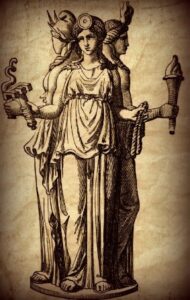
At the crossroads that Glück presents, she gives an image of interconnectedness and of the intersection between realities that eschews prescriptive meaning as it completes self-reflection. This may be a perfect turn toward the psychological travel that Hecate is capable of as an expanded experience of feminine mysteries, the reflections of self and world. While the season of the Witch is upon us, enjoy turning the wheel of divine experience that Hecate evokes as psychopomp. Could it be that invoking her powers might contain some of the psychological cure human experience is currently starved for? Several links below have been included for further exploration.
https://www.pbs.org/newshour/arts/poetry/weekly-poem-hoa-nguyen-links-globalization-goddess
https://occult-world.com/hecate/
https://keepingherkeys.com/blog/f/creating-altars-and-shrines
http://www.thaliatook.com/AMGG/hekate3.php
http://www.thaliatook.com/AMGG/hekate2.php
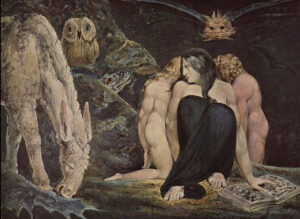
Notes
[1] A Portrait of Hecate Author(s): Patricia A. Marquardt Source: The American Journal of Philology, Autumn, 1981, Vol. 102, No. 3 (Autumn, 1981), pp. 243-260 Published by: The Johns Hopkins University Press Stable URL: https://www.jstor.org/stable/294128
[2] CG Jung. (1959). The Archetypes and the Collective Unconscious, psychological aspects of the Kore, para 312, 313. Princeton: Bollingen Series
[3] Louise Glück, Averno. (2006) Nobel Laureate 2020
~ Andrea Jivan, MA, LMT
Blog Team Member
Jung Society of Utah
Never miss a blog post! Sign up for our newsletter here.
If you enjoyed this blog, please share it via one of the social share buttons below.
